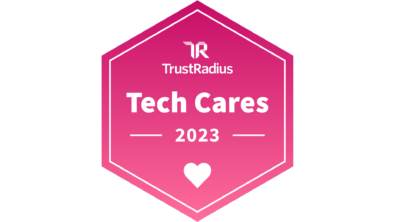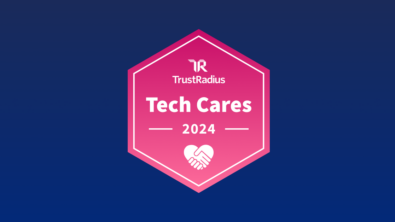Solid Edge User at Huntsville Solid Edge HQ
2:50 People arriving. Bill McClure Velocity Vice president talking with Solid Edge users:

3:00 we just started with Dave Ault thanking everyone one for getting together. Dave also gave me his Nikon Camera so ask him for Pictures ![]()
3:10 Ken Grundey is now talking about PLM World. He says this is an organization from the users for the users. He’s talking about the regional user groups, and Special intrest groups. He has a lot of information on how to get more involved and make use of PLM World resources.
3:15 Jeff Walker (planning manager for Solid Edge) is up next. He is talking about the advantages of History based modeling and the advantages of Synchronous based modeling. Its important that customers can do there job.
3:21 Jeff says technology is great but there is only so much you can do with it. His job is to make it efficient and helpful for customers to improve their productivity.
3:30 Steve Webb from Saratech is giving an example using sketches in Solid Edge ST2 (the latest release)
3:35 Steve is now talking about the “Reorder rounds” command. In traditional modeling, how the intersection is created depends on the order in which the rounds are created. In Solid Edge ST2, it is a menu pick to select solution 1 or solution 2.
3:40: Jeff Walker is back talking about new ST2 tools for knowing where the model is changing when doing sync changes.
3.41: Now is talking about the chamfer feature which knows its a champher and keeps this information as there are changes in the model.
3: 43: Jeff talking about “History free threads that maintain size and position” and new commands for aligning holes. Can even align the holes that come from other CAD systems imported into Solid Edge.
3:45 Jeff now talking about how to go from 2D to 3D… not converting CAD systems but taking 2D drawing with dimensions from supliers or other 3rd parties and using this to create the 3D data.
3:47: Steve Webb is back – doing a demo of what Jeff mentioned in PPT… starting with a 2D drawing with front and side views. As Steve creates extrudes the geometry, the 2D dimensions attach to the part becoming 3D PMI. They are fully modifiable. Also, he is using keypoints in the drawings to create the 3D data.
(note from Burhop: this is really something you want to see for yourself. Try to get a demo of this)
3:53 Jeff and Steve discussing Live Sections. This is now for Solid Edge ST2. These are 2D sections you can create of your part that create a 2D cross section. Wit this, you can create 2D dimensions and then modify them to modify the section. The 3D geometry is then updated to match that section.

4:00 Jeff is now talking about the new Synchronous sheet metal.
4:06 Steve is showing how you can almost design the entire sheetmetal part without ever going to the ribbon bar. Flanges, can be created using just the steering wheel.
4:09 Steve asks, how many times did I go to the UI? “Zero, I built this whole part without going to the ribbon” (about an average complex part – I was too slow to get a picture)
4:16 Jeff now talking about Solid Edge Simulation (note from Burhop: w00t!!! -this is my real job)
4:20 Steve has taken over and doing a demo of a lawn mower blade. Is now using Sychronous to change the model and get the new results (no need to update any of the FEA).

4:26 Jeff talking about other technology – just lots and lots of medium and little things people have asked for.
4:27 talking about UI improvements – improved Quick Access Toolbar, Ability to use PMI in pixel mode.
4:30 now talking about updated to Teamcenter, Insight, SharePoint support.
4:35 Lots of questions being thrown at Jeff, mixing of traditional and sych, Express Route, etc (I wish I could type faster!). Jeff is now talking about how and when to move to Synchronous Technology. Recommends taking a measured approach. Synchronous and Traditional made to work together so mixing is not a problem. The key for most customers is productivity.
4:40 Imported data is a great place to start with Synchronous technology.
4:44 You can now “In place activate” into any document regardless of the document type. Create in place now works for any combination.
4:45 Jeff is giving some product structure examples of mixtures of sync parts, traditional parts, synchronous assemblies and traditional assemblies.
4:50 Jeff discussing when you might want to convert older parts to Synchronous technology (too much info on the slides to capture it all)
5:21 we took a break and are now back with Steve talking about Tips and 
Tricks for Solid Edge
5:29 Fred White, responsible for GTAC is now talking. Giving some advice on best practices on updating software.
5:33 there are two groups updates
– New Machines Graphics Car, 3D nput Devices, Drivers
– Solid Edge releases
5:35 Develop some basic acceptance tests – Verify critical workflow requirements, exporting data, inporting data, 3rd party applications, VB programs and other addins. For noncritical maintenace packs, try to get them out during slow times. Be sure to read the “readme” files. There is good information there. (Fred has much more information – sorry I’m a slow typer).
5:45 Next Up is a customer round table. Jeff is asking what people want most in Solid Edge. What could be better, what pet peeves they have. Jeff has a spreadsheet setup on the screen taking notes. Discussion topics include: tutorials, import from other CAD systems, and a number of individual issues.
6:51 Last post. Pizza and door prize.


